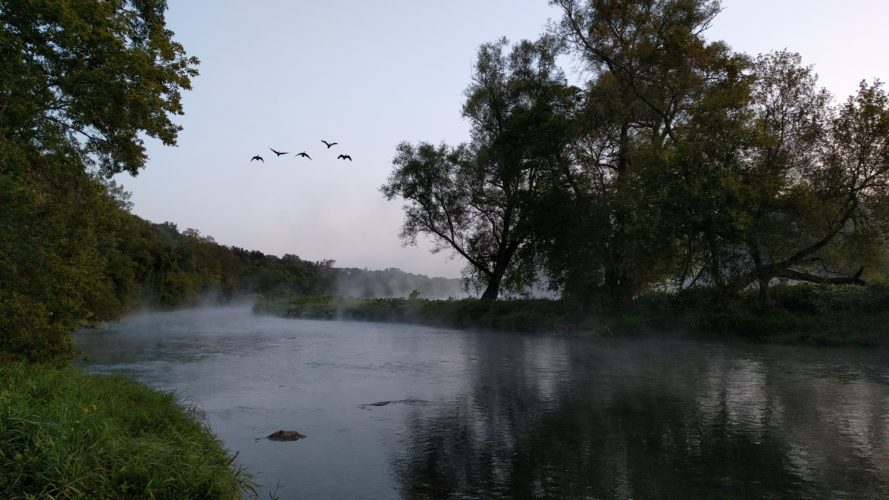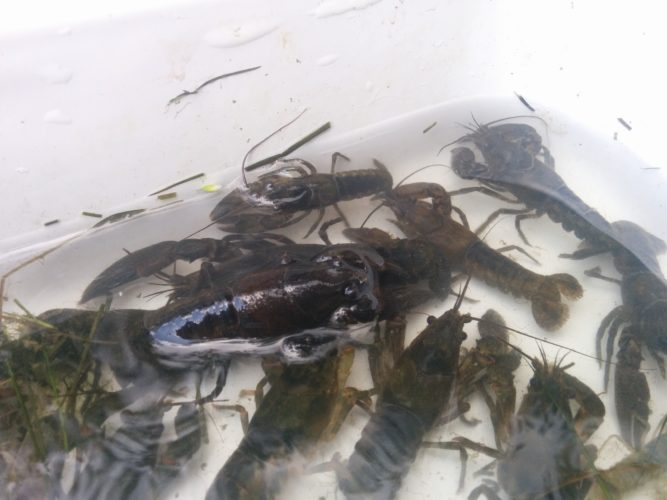Water quality data produced in the nearshore areas of the Great Lakes and interface areas with their tributaries have largely resulted from new monitoring initiatives since the 1970s, and especially in the last two decades. Despite producing novel information that has transformed our understanding of how the Great Lakes are influenced by their tributaries, the science and practice of water quality monitoring have not changed in over 50 years.
Insights from 21 water monitoring and management practitioners provide a current (2019) snapshot of the state of practice in Ontario, Canada. This discussion was contextualized by the issue of Cladophora (benthic algae) in the eastern basin of Lake Erie, though most practitioner comments were more general than this context.
Practitioners raised 106 issues and 51 recommendations grouped into the four SWOT categories (strengths, weaknesses, opportunities, and threats). Priority issues and recommendations, identified by practitioners, are listed below (contact the author at [email protected] for the report describing all issues and recommendations).
Priority issues:
- Knowledge gaps exist in the Grand River-Lake Erie context, including a lack of capacity to monitor for cumulative effects in the river-lake interface.
- Communication between knowledge producers and end users needs improvement in every way.
- River-lake dynamics are highly variable and not well documented.
Priority recommendations:
- Collaboration is critical. Consult with all parties from the start and design monitoring together (including United States and local Indigenous and Canadian communities).
- Decision-makers and scientists should co-design monitoring, which would see pending decisions translated into viable questions.
- Generate knowledge regarding the relative influence of the Grand River and Lake Erie on each other, and track change over time (including the interface’s importance to Species-at-Risk).
- Community groups and other partners may collaborate to fill gaps in mandates or jurisdiction.
- Be transparent (e.g., how information was created and do not pass political opinions off as fact).
Although many strengths of water quality monitoring were identified, there is no question that improvement is needed. Three quarters (74.5 per cent) of the insights provided by practitioners highlighted deficiencies: weaknesses comprised 53 (50 per cent) of 106 issues, and threats comprised another 26 (24.5 per cent). The priority issues and recommendations above are described briefly below. In addition, a culture shift is needed to make the practitioner-recommended changes feasible in the long-term.
Addressing knowledge gaps
Recent research (since 2015) may provide insights regarding influences of the river in the lake’s nearshore. However, in many cases these studies have not yet been published and may—in some cases—never emerge as published information. Such knowledge gaps exist for many reasons, including staff turnover and a lack of strong data and information management. For example, sharing and integration of information from different monitoring agencies does not happen easily or efficiently. Data are often not even looked at for years after collection due to limited capacity to analyze them and produce information.

Involvement from community members and non-governmental organizations may help address knowledge gaps. Engaging with these groups—including Indigenous communities—and their knowledge may require a reconceptualization of our current data/information systems. This reconceptualization requires changes to the ways in which we identify and apply evidence to management and decisions.
Different forms of knowledge must be recognized to generate a more holistic understanding of the systems we are managing. Further, practitioners suggested that funding deficiencies not only affected water quality monitoring in recent years, but also the capacity for engaging with community members. As such, community-driven processes were not feasible to pursue despite a recognized need for them.
Communication, collaboration, and communities
Communication between monitoring personnel and managers/decision-makers (e.g., determining monitoring questions), as well as in the dissemination of information, was a priority area of improvement identified by practitioners. Knowledge mobilization was suggested to be a two-way process, which invites community members—including Indigenous persons—to also contribute to the watershed knowledge base.

Practitioners celebrated the immense collaborations that exist in water quality monitoring across Ontario—more than anywhere in Canada. However, they collectively prioritized continued local, regional, and binational collaboration as a recommended action. This recommendation included four sub-recommendations:
- Determine personnel roles on more than knowledge and monitoring capacity (e.g., flexibility/adaptability was raised as a critical criterion for determining roles).
- Apply social network analyses to reduce redundant efforts and identify potential areas of influence or authority.
- Implement a stakeholder assessment exercise (e.g., who is missing, who is redundant, etc.) to ensure the right people are engaged at the right times.
- Stakeholders/end users can be engaged collaboratively to co-design and use predictive models. Thus, although current monitoring is highly collaborative, these collaborations can be more focused and coordinated.
A culture shift towards sustainability
Strengthening the practice of freshwater quality monitoring involves consideration of integrated priorities—social (including cultural), economic, ecological, and institutional (including governance)—in the pursuit of sustainability. Otherwise, existing shortcomings in monitoring and management are likely to be maintained.
Though the watershed management approach—more holistic and integrated than water management, which excludes social and some institutional purviews—is generally supported today, practitioners highlighted imperfections in its execution. For example, today’s practitioners struggle to motivate many of their colleagues to even consider interdisciplinary or cross-sectoral (or even inter-agency) collaboration, coordination, or communication. Practitioners demonstrated that sustainability has remained the domain of siloed departments. However, maintaining siloes of any kind exacerbates issues like uncoordinated monitoring activities, disparate professional cultures, and a lack of knowledge transfer between/within monitoring agencies.
A culture shift towards holistic thinking is needed, which requires practitioners to recognize interdependencies between the pillars of sustainability. This culture shift also demands action to:
- Better coordinate monitoring (e.g., clearly identify roles of monitoring and management bodies).
- Recognize end user information needs.
- Deliver information in end users’ preferred formats.
- Unite different knowledges, customs, and values for a unified purpose (e.g., some aspect of watershed health), while respecting distinct identities.
Adapting current practice
Practitioners proposed an adaptive monitoring process that, like others, involves collaboratively developed questions of relevance to management and/or decisions, incorporates holistic thinking about the ecosystem, and is based on evidence. An important distinction between the proposed process and commonly defined adaptive processes, is how ‘evidence’ is defined. The proposed process is meant to be flexible enough to include multiple forms of knowledge, which are disseminated in different ways (e.g., not always in the form of a conventional database, technical report, or peer-reviewed publication).

Other aspects unique to this process are a dedicated phase for determining data use prior to data collection, and the involvement of knowledge brokers (e.g., communications specialists, knowledge mobilization specialists, or other individuals who are positioned to bring information to end users) in the dissemination of data and information. The term ‘stakeholders’ is replaced by ‘end users’ to include Indigenous communities where relevant, and the establishment of priorities is driven by decisions as well as Indigenous management/stewardship interests. Data use is determined by open conversations on ownership, control, access, and possession (e.g., OCAP® principles).
Ultimately, we must recognize that improving freshwater quality monitoring involves—among other things—consideration of integrated social, ecological, economic, and institutional priorities in the pursuit of sustainability. Broad reconciliation and a culture shift towards holistic thinking are needed to unite diverse persons for knowledge co-creation and sharing. Integrating monitoring and sustainability may help us overcome longstanding limitations or challenges regarding capacity, coordination, and linkages with management/decisions, and may enable a new vision of collaborative and equitable water stewardship.
Elaine Ho is a PhD candidate at the University of Waterloo.









